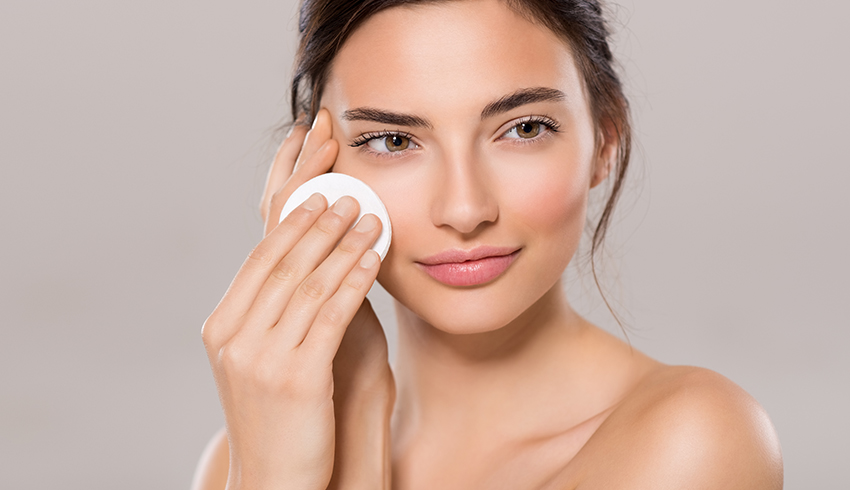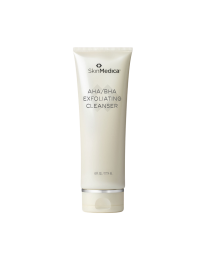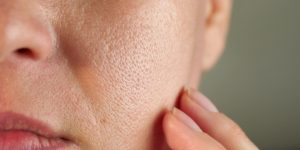Free Shipping Over $100
Free Samples With Every Purchase
Auto Replenishment Available
Authorized Reseller
How Often Should You Exfoliate Your Face?

Exfoliation is an important part of any skincare routine. However, determining how often to exfoliate the face can be complicated because there’s not one answer that applies to every person. It’s important to find the right products and pay attention to the way your skin responds. In this blog, we’ll go through some exfoliation basics, including answering the question, “How often should you exfoliate your face?” We’ll also discuss our top three most-recommended exfoliators and why they’re the go-to solutions.
What Is an Exfoliator & What Does It Do?
Depending on the individual’s age and a variety of other factors, people can lose 100s of millions of skin cells every day. Yes. You read that correctly.
The body naturally retains dead skin cells to form a protective layer until they are shed. The problem is, not everyone sheds these dead skin cells effectively, leaving skin looking dull and adversely affecting the texture. When left unremoved, dead skin cell build-up can also lead to clogged pores. That’s where exfoliation comes in. A good exfoliator removes dead skin cells, revealing the healthy, new cells below and preventing the issues that can arise when dead skin cells remain on the skin.
Are there Different Types of Exfoliators?
Like many other skincare products, there are numerous different types of exfoliating products available. However, most exfoliation products fall into one of two categories:
1 – Physical Exfoliants
Physical exfoliants, as the name suggests, are used to physically remove dead skin cells by scrubbing them away. Physical exfoliants include things like cleansing scrubs and treatments that use sugar or other ingredients to physically exfoliate the skin. They also include things like exfoliating brushes, loofahs, and pumice stones that are used to remove dead skin cells. Finally, in-office treatments like dermaplaning and microdermabrasion are also forms of physical exfoliation. While physical exfoliants are effective, people with sensitive skin may experience an increased risk of inflammation and irritation when using physical exfoliants.
2 – Chemical Exfoliants

Chemical exfoliants use chemical ingredients (usually alpha hydroxy acids, beta hydroxy acids, a combination of the two, other acids, or retinoids) to remove dead skin cells. In addition to removing dead skin cells, chemical exfoliants have the added benefit of jumpstarting the cell renewal process and may help to create a healthier cell turnover rate.
How Often Should I Exfoliate & What Type of Exfoliator Will Work Best?
Wondering how often and what types of exfoliating products to use? We recommend using only high-quality, medical-grade products, as less expensive, drugstore products are often more abrasive and can cause damage to the skin. It’s also important to resist the urge to over-exfoliate. Over-exfoliation can cause damage to the skin, especially for those with dry or sensitive skin. The frequency of exfoliation and type of exfoliator best suited to your skincare routine is determined by your skin type as described below:
- • Normal skin – These lucky people can usually use either a physical or chemical exfoliator. Exfoliating two to three times each week is fine. Those with a normal skin type should pay attention to their skin and cut back if they notice redness or irritation. They can add another day if they notice spots where the skin is thick or the texture is uneven.
- • Dry skin – Exfoliating at a frequency of one to three times each week is recommended. Some people with dry skin notice a significant build-up of dead skin cells, so these people will need more frequent exfoliation. Unfortunately, many people with dry skin also have sensitive skin, which can be easily damaged by frequent exfoliation, so these people may need to exfoliate less often. The frequency of application should be based on how well your skin responds to exfoliation.
- • Oily skin – Because excess oil can trap dead skin cells, making them more difficult to shed naturally, those with oily skin will need to exfoliate more frequently, at least two or three times a week. Depending on how the skin looks and feels, those with oily skin may want to alternate between using a chemical and physical exfoliant.
- • Combination skin – This skin type is often the trickiest to care for. In fact, some people with combination skin have different exfoliation routines for different areas on their faces. In areas that are typically oily, they may exfoliate several times a week while carefully avoiding dry or sensitive areas that don’t need to be exfoliated as frequently. Again, it might make sense to alternate between a chemical and physical exfoliant. On days when the whole face is treated (even those sensitive or dryer areas), a chemical exfoliant will be preferred.
- • Sensitive skin – People with sensitive skin can experience a range of concerns related to exfoliation. For some, a chemical exfoliant is best because physical exfoliants can cause micro-injuries that turn into inflammation and irritation on sensitive skin. For others, the ingredients in chemical exfoliants cause an allergic response, leading to rashes, redness, and irritation. You know your skin. Choose a product that your skin will tolerate, and limit exfoliation to once or twice a week.
- • Acne-prone skin – Most people with acne should follow the same exfoliation routine as those with oily skin. Pay attention to the product you choose and try to find one that is formulated specifically for acne-prone skin.
- • Aging skin – As we get older, our skin becomes thin, and that protective layer of skin cells becomes more important. That means we don’t need to exfoliate as frequently. It also means skin can be more easily damaged, so physical exfoliants, which are much more likely to cause damage to the skin, may not be the best choice. However, skin cell turnover also slows as we age, so exfoliation is still an important skincare step. Those with aging skin should exfoliate twice a week and use chemical exfoliants.
Our Top 3 Exfoliators
If you’re looking for a new exfoliator to add to your skincare routine, consider one of our top three exfoliators:
SkinCeuticals Micro-Exfoliating Scrub
This is our top exfoliator recommendation for a reason. The SkinCeuticals Micro-Exfoliating Scrub is a powerful combination of chemical and physical exfoliation. It’s gentle enough for all skin types (even sensitive skin) and it includes ingredients like aloe to soothe and soften skin, minimizing the risk of irritation.
Skinbetter Science Alpharet Exfoliating Peel Pads
Skinbetter Science Alpharet Exfoliating Peel Pads are our go-to for acne-prone or oily skin. The proprietary blend of ingredients helps to remove dead skin cells, promotes healthy skin cell turnover, and diminishes the appearance of fine lines, wrinkles, and other signs of aging. This product is recommended for use in the evening since alpha hydroxy acid can increase sensitivity to sun exposure.
SkinMedica AHA/BHA Exfoliating Cleanser
The SkinMedica AHA/BHA Exfoliating Cleanser is gentle and effective for all skin types. The formula combines alpha hydroxy acid and beta hydroxy acid to deliver smooth, healthy-looking skin.
Want Personalized Exfoliation Recommendations? Visit U.S. Dermatology Partners
If you’re ready to start including exfoliators in your skincare routine but you’re still not completely confident which option will work best for you, it’s time to visit one of our knowledgeable dermatologists at U.S. Dermatology Partners. Our team of skincare professionals curated the list of products available on Derm Skincare, and they can help you find the best exfoliators for your skin health needs. Plus, they will work with you to create the ideal daily skincare routine. When you’re ready to get started, you can take a few moments to complete our online scheduling request form. Once we receive your information, a local dermatology team member will be in touch to finalize the details.













